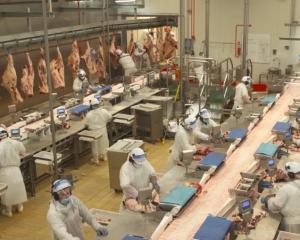They say good things take time.
Kate Wendelgelst isn't holding her breath when it comes to the success, or not, of her fledgling truffle venture.
Returns from the highly prized fungi might sound good, until you look at the facts.
The reality was her truffle-inoculated trees at Halfway Bush might not ever produce truffles.
Truffle-growing was a risky business but Ms Wendelgelst remained philosophical: the trees also produced pine nuts, so if they failed to yield any fungal gastronomic delights, there were always pine nuts.
Whether resident dog Mouse was any good at sniffing out truffles was also yet to be seen, although the little dog was very good at sniffing out chickens, she said, laughing.
Ms Wendelgelst, of Stonehurst Gourmet Mushrooms, did not ever expect to "make millions'' from her edible fungi farm.
That had never been her aim.
Rather, she wanted to make enough money to support herself and her two children.
But like any primary production, it was not easy.
"It's a challenge, it's not simple. It's like gardening; sometimes it works really well, other times ...'' she said.
It was also not a quick result.
She spoke to someone recently who had planted a tree infected with porcini and it had taken 14 years to get the first results.
But home-based self-employment worked in well around her children and she was at home during the holidays.
From a practical horticulture and agriculture background, Ms Wendelgelst looked at various business ventures she could undertake on a lifestyle property.
That included flowers, which were discounted due to rabbits, and also truffles but, because of the timeframe involved with truffles, she got sidetracked by mushrooms.
She has been growing mostly oyster mushrooms, along with shiitake and velvet shank (enoki) mushrooms inside growing rooms, and also birch bolete.
The best way to describe an oyster mushroom - her most prolific variety - was that it was not as strong as a Portobello mushroom, but stronger than the button mushrooms available in supermarkets, she said.
In her first year, she had no heating.
Last year she had some solar heating and this year she has a heat pump.
Mushrooms were grown in bags filled with either straw or sawdust.
She now had a commercial kitchen on-site where she was able to dry mushrooms and experiment with other products.
She sells her mushrooms to Esplanade Restaurant, No 7 Balmac and Bracken Restaurant in Dunedin, and also in bulk to organics shop Taste Nature.
The biggest issue was maintaining continuity of supply.
She will be back at the Otago Farmers Market on March 5 for her third year.
Her first year at the market was to gauge interest.
They were a "novelty thing'' and a lot of New Zealanders did not know what to do with them.
When she first began the business and gave some to neighbours, they asked her if they were safe to eat.
"New Zealanders are quite happy to experiment but only so far,'' she said.
There were probably about six major mushroom producers in New Zealand and not many smaller, specialty growers.
She was not aware of any others in Otago.
Prior to venturing into fungi farming, her association with mushrooms had largely been limited to picking "bucket-loads'' on riverbanks as a child.
Ms Wendelgelst has also been studying part-time at the University of Otago and is in her final year of a science degree, majoring in botany.
While not directly relevant to the farming of mushrooms, the scientific theory involved had been a big help with the technical side of it.
As for her set-up costs, Ms Wendelgelst said she had not gone to extremes.
It was still very much a manual, rather than computerised operation.
She was keen to expand, but not by adding more grow rooms.
She would like to have more mycorrhizal fungi (those that grow on plants), like the birch bolete.
One of the reasons a lot of people did not take it further than just a hobby was because of compliance costs, she said.
Drying mushrooms was classified as processing, which meant she had to have a registered commercial kitchen.
Unlike flowers, for example, which were susceptible to fashions and also the vagaries of weather - "if you grow them outside and get a hailstorm, the whole lot is gone'' - she could control many of the variables with mushroom growing.
But if one of the crucial elements of heating, airflow and water failed, then it could "all go to custard'', as she discovered.
When it came to acquiring sawdust to grow the mushrooms in, she had a friend with a treeline that she raided.
But there were only specific tree types' sawdust that they would grow in and, unfortunately, pine was not one.
As for her own mushroom use, Ms Wendelgelst said they tended to "get thrown into things because they were there''.
Crushed mushrooms were used as a stock, to add more nutritional value, while mushroom flakes did not take so long to rehydrate in cooking.











